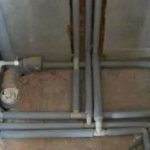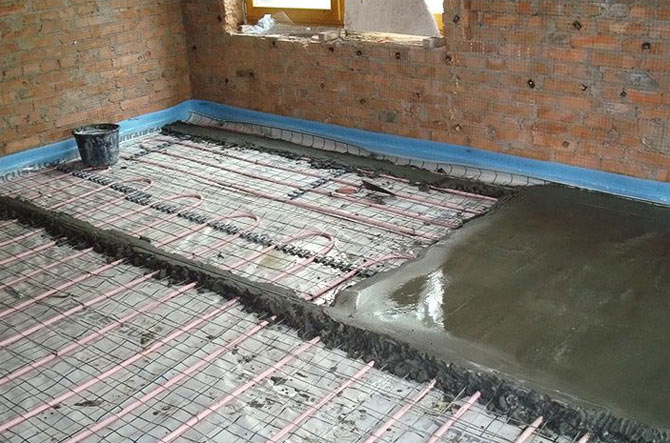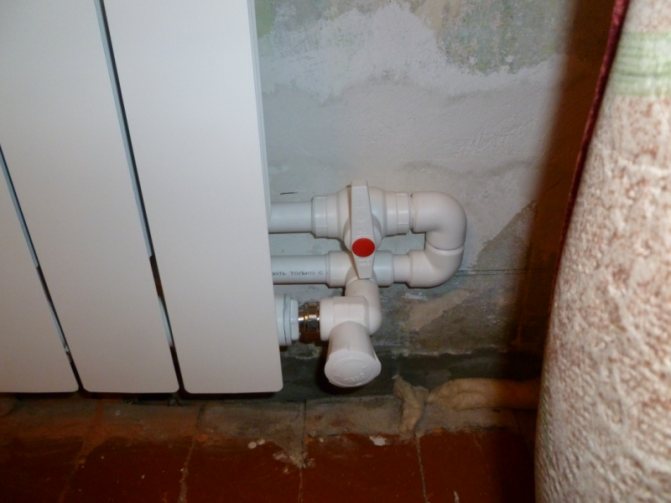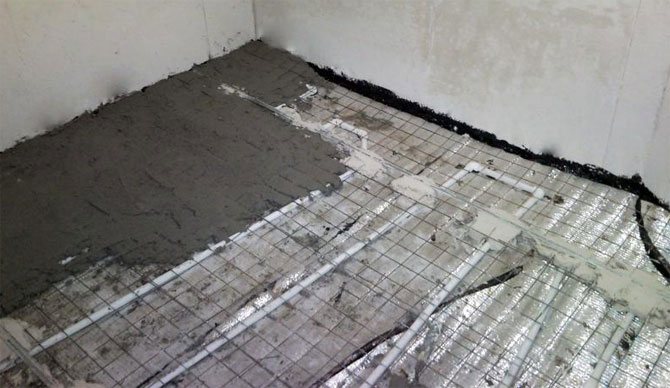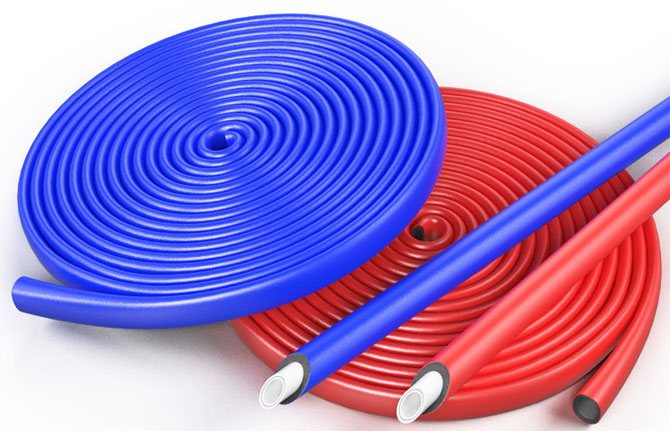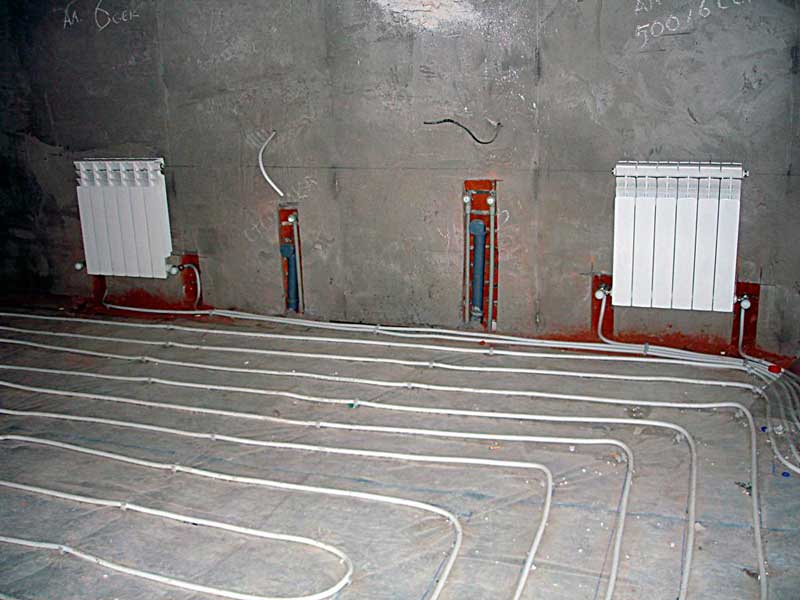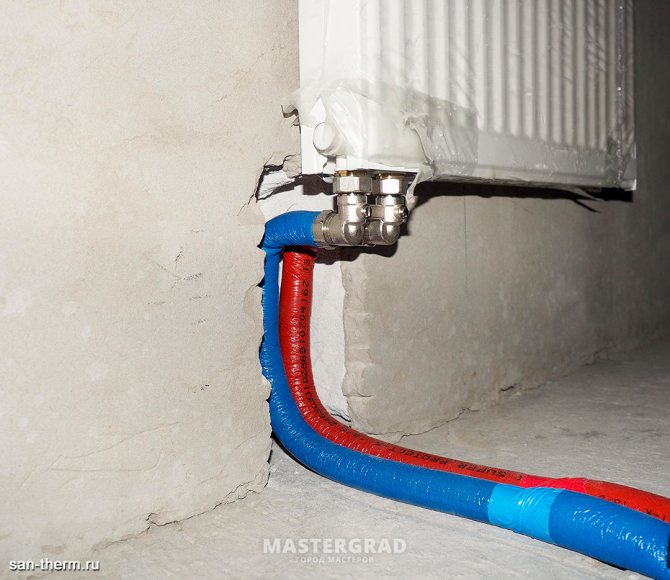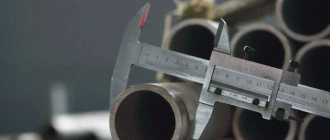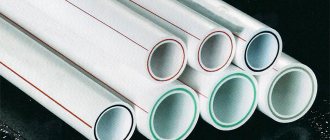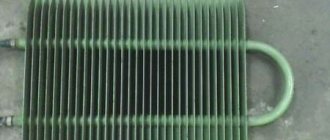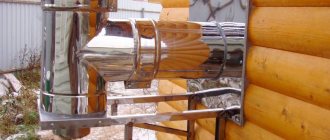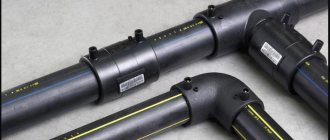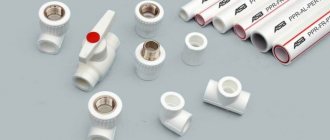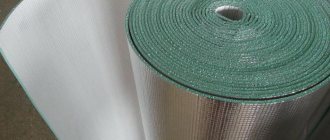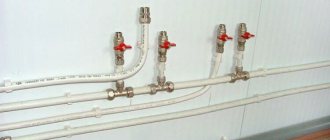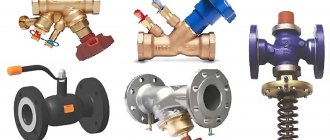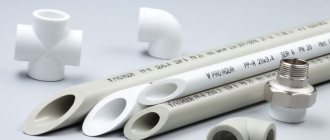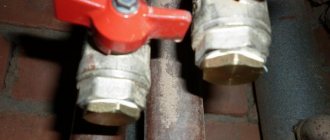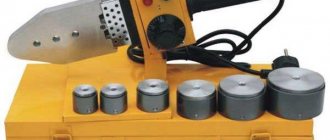Can polypropylene pipes be poured with concrete? What conditions are necessary for this
Overhaul in residential premises of multi-apartment or private houses provides for the replacement (modernization) of elements of the heating system. The need is associated with a reduction in the cost of paying for energy resources during further operation and giving an aesthetic appearance to rooms.
Sometimes the owners decide to hide the heating pipes under the floor covering or in the walls of the room. In this regard, they are interested in the possibility of using plastic pipes for these purposes and the question is, can a polypropylene pipe be poured with concrete? How long is the service life of the communications located under the screed?
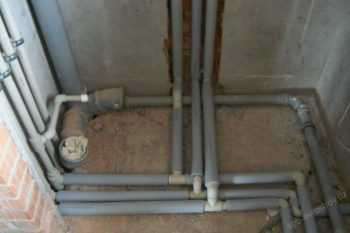
Concealed pipe placement
Characteristics and application of polypropylene pipes
To determine the possibility of installing polypropylene pipelines under the screed, it is worth referring to their characteristics. Note that polypropylene is one of the polymer variants, the components of which are combined with derivatives of ethylene gas. The material is stable when interacting with an aggressive environment and alkaline solutions, while the operating conditions declared by the manufacturer allow a difference in operating temperatures from -10 to +110 degrees.
The advantages of polypropylene:
- the term of use under heat loads without changing the quality and external is at least fifty years, and when organizing cold water supply, it is twice as long;
- the working pressure in the water supply or heating system can reach 20 bar;
- constant contact with the water mass of the inside does not provoke the formation of scale;
- the noise of flowing water is absorbed by the walls of the products;
- propylene has properties of low thermal conductivity, which prevents the formation of condensation on the outer walls;
- the product is lightweight and involves installation even by one person;
- when using a special tool, the products are connected and assembled in regular places in a short time;
- elasticity helps to give the turns the given bends;
- after installation of products, additional maintenance is not required;
- affordable price of the product and fastening elements.
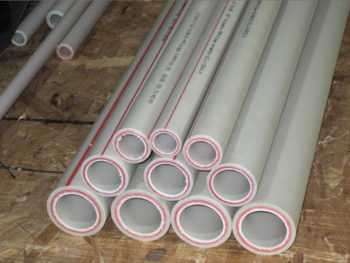

Hot water pipes
On the construction market there are polypropylene pipes of different colors. This fact does not determine the properties of the material from which they are made, with the exception of black, which helps to protect against UV radiation. The properties of the product are determined by the markings applied to the surface:
- РРВ. The defining characteristic is the increased mechanical strength due to the reinforcement technology during manufacture. The application is recommended for heating and water supply systems, including under a concrete screed.
- RRH. Marking is applied to products of significant diameters, the size of which allows them to be used in ventilation systems, sewerage systems, and cold water supply.
- RRK. The most used brand of polypropylene products. It can be used in cold and hot water supply systems, heating. It easily transfers thermal and mechanical stress.
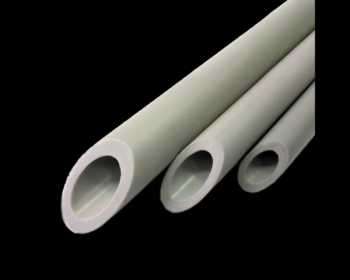

Cold water pipes
Important! The price of polypropylene pipes and fittings differs in each region of the country. In this regard, before purchasing, it is recommended that you familiarize yourself with the characteristics of the products presented in stores and choose copies that are optimal in price and quality.
Application features
The technology for manufacturing polypropylene pipes does not exclude the linear expansion of the product when exposed to high temperatures. Correct selection of a pipe with the required properties and installation of supports with the organization of expansion joints will make it possible to compensate for this disadvantage. Any system includes branches from the central pipeline, direct connection and the creation of turns at different angles, while differences in pipe diameters are not excluded. The use of fittings, which are divided into the following types, simplifies the solution of these problems:
- flange type;
- crimping device;
- using a threaded connection;
- welded structure.
Polypropylene fittings are used to connect pipes made of the same and other materials. This effect is achieved by placing chromium-containing or brass inserts in the inner part, which determine the technical possibility of connecting to plumbing devices and creating transitions.
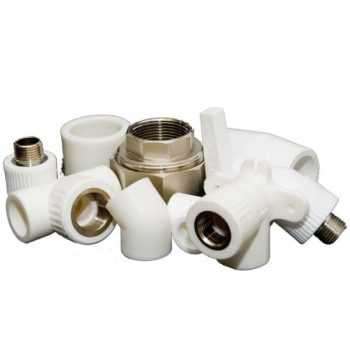

Fitting
Practice shows that the main reasons for the occurrence of ruptures of heating pipes under the screed are a gross violation of the installation technology and poor-quality soldering of fittings at the joints of products.
The soldering process is not difficult for DIYers. The device for connecting pipes is represented by a soldering iron with marked nozzles of various diameters. Before industrial brazing, it is recommended to conduct a trial thermal connection of materials on small pipe pieces and unused joints. Using combined fittings, it is possible at the design stage to ensure the optimal pressure in all parts of the heating structure, while preventing unnecessary costs for using pipes of a larger than necessary diameter.
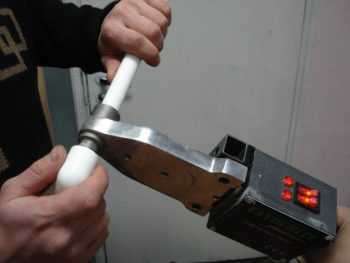

Soldering polypropylene pipes
Important! The connection of polypropylene pipes with the external location of the aluminum reinforcement requires its removal for the immersion length into the abutting element. Otherwise, all soldered elements must be dust-free. Degreasing is recommended.
Installation technology
In a separate category, polypropylene pipes are distinguished for organizing a warm floor. Their characteristics allow laying in a concrete screed without fear that the system will rupture. The basis for such a statement is the pipe laying technology, in which the joints are above the floor surface, and only whole sections of the pipeline are silted up with a mixture.
The installation procedure for laying a water-heated floor is represented by the following measures:
- It is advisable to carry out a full calculation of the required material and accessories and draw up a scheme for laying polypropylene pipes. When calculating the number of products, take into account the form of laying (serpentine, spiral and other optimal for a given room).
- The surface of the rough screed is cleaned of construction debris.
- The waterproofing layer is laid sequentially, then the heat-insulating material is mounted.
- A metal mesh is laid as a base over the entire area of the room covered by the heating circuit. Products are directly attached to it using plastic clamps or iron wire.
- All heating circuits are connected to a pre-formed manifold. The system is tested with parameters higher than the operating parameters. The temperature to the operating temperature is raised gradually.
- After checking, fill in with a final screed and lay the floor covering.
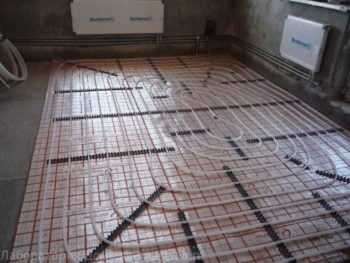

Underfloor heating under the screed
Important! If there are signs of pipe breakage under the screed, it is necessary to highlight the local area of the floor surface where the pipe was damaged, using the installation scheme, open the surface. Dry the affected area and carry out repairs.
The information presented above indicates that the use of polypropylene products in the installation of individual heating systems is a reasonable and correct decision. Compliance with the installation rules and high-quality soldering at the joints of the connecting elements ensures a long period of trouble-free operation. The technical characteristics of polypropylene elements, which determine their reliability, make it possible to place communications in the cavity of the walls and under the concrete screed.
One of the options for laying polypropylene pipes is presented in the video below.
Video 1. Installation of plastic heating pipes.
https://www.youtube.com/watch?v=wn1Tq7-p4Vw
Average score of ratings more than 0
Installation technology
In a separate category, polypropylene pipes are distinguished for organizing a warm floor. Their characteristics allow laying in a concrete screed without fear that the system will rupture. The basis for such a statement is the pipe laying technology, in which the joints are above the floor surface, and only whole sections of the pipeline are silted up with a mixture.
The installation procedure for laying a water-heated floor is represented by the following measures:
- It is advisable to carry out a full calculation of the required material and accessories and draw up a scheme for laying polypropylene pipes. When calculating the number of products, take into account the form of laying (serpentine, spiral and other optimal for a given room).
- The surface of the rough screed is cleaned of construction debris.
- The waterproofing layer is laid sequentially, then the heat-insulating material is mounted.
- A metal mesh is laid as a base over the entire area of the room covered by the heating circuit. Products are directly attached to it using plastic clamps or iron wire.
- All heating circuits are connected to a pre-formed manifold. The system is tested with parameters higher than the operating parameters. The temperature to the operating temperature is raised gradually.
- After checking, fill in with a final screed and lay the floor covering.
What are the rules for installing polypropylene heating pipes?
First of all, it is necessary to make calculations regarding the entire heating system, including the boiler output.
Based on this, polypropylene pipes are selected, I mean the diameter of polypropylene pipes.
Heating pipes will work with a coolant that heats up to a fairly decent temperature with a plus sign.
So you need a reinforced polypropylene pipe (that is, multilayer).
They are reinforced with polypropylene or aluminum or fiberglass.
A more modern material is polypropylene reinforced with fiberglass, it is not necessary to clean the pipe with a shaver, it is simply not needed.
There are no special separate rules specifically for heating.
Solder observe the heating temperature (take into account the diameter of the pipes), here is a table to help you.
Do not forget to allow time for cooling the soldering point.
Pipes can be hidden both in the wall and in the screed (you write about this) polypropylene joints do not flow with proper soldering, so hide them if you think it will be better.
Although the pipe itself gives off heat, you have to think about it, we do not know anything about your house (how and with what it is insulated, the region of residence, and so on).
If you start up the pipe outside, then do not forget about the clips (fasteners). It is better to fasten the clips on straight sections at least 50 cm from each other, the pipe will not bend from the temperature.
Well, remember that polypropylene works up to 95 degrees, if the temperature of the coolant is higher (for example, you live in the Far North), then it is better not to use polypropylene in the heating system.
If you are interested in the marking of pipes, then for heating take with the marking PPB, or PPR.
Preparing for installation
The primary task is to draw up an assembly drawing for future highways. In fact, the pipeline plan should be carried out taking into account all connections, taps, process cabinets, shut-off valves. Detailed planning helps to avoid redundant connections and waste of material, as it is determined in advance which parts and in what quantities are needed.
Note! It is better to keep the plan drawn up. It can be useful for system maintenance and installation of new communications. For example, to tie in an additional crane.
The walls for the hidden installation of pipes will have to be gouged, that is, a channel for laying the pipe line must be cut out in the concrete. It is advisable to pre-mark the working area in order to make an even and high-quality channel.
It is advisable to take into account that it is not recommended to gouge walls in panel houses, since the thickness of the panels is usually small. Walls made of thick bricks or concrete are most suitable. They can be ditched without fear.
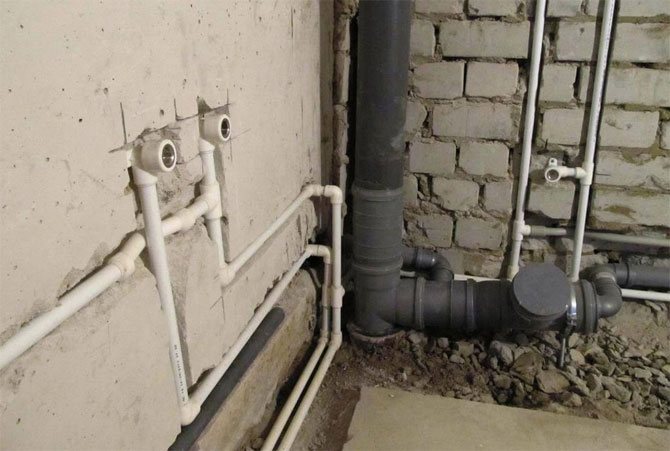

Next, you need to mark pipes and fittings in order to know the direction of welding and the order of installation. If necessary, it is better to cut the products in advance.
We recommend that you familiarize yourself with: How to properly solder polypropylene pipes to create strong joints
To carry out installation work, you need tools designed for polypropylene:
- scissors for cutting;
- a shaver for removing the reinforcement and a chamfer for leveling the cut surface;
- welding machine with temperatures up to 260 ° C;
- wall chaser or grinder for cutting a cavity in the wall;
- chisel and hammer or hammer to remove material between strobes.
Warm floor made of polypropylene pipes
There is a need for additional floor heating in all regions of our country: the first floors of residential buildings are cooled for most of the year. The solution to the problem is the device of a separate heating system under the screed. Most often, polypropylene pipes are used as a conductor.
Pipes: marking and the right choice
The marking of polypropylene pipes is the first thing to pay attention to when choosing a suitable conductor for hot water, since not every product is suitable for these purposes. What is hidden under encryption:
- Working pressure PN, which the pipe must withstand throughout its entire service life at a water temperature of 20 ° C. For underfloor heating, you should choose a designation not lower than PN20-25 - they are designed for hot water.
- Type of material: PP - polypropylene. Its addition PP-1, PP-2, PPB indicates the type of raw material used - homopolymer or block copolymer. Pipes marked PPR, sometimes PPB, are suitable for hot water.
- The diameter of the conductors and the thickness of their walls in millimeters from 10 to 1200 mm. For internal heating systems and the organization of underfloor heating, pipes with an inner diameter of no more than 30 mm are used.
- Marking - manufacturer's designation, year of manufacture.
Manufacturers
There is a lot of competition from pipe manufacturers on the market. Which ones to choose?
- Russian brands: Politek, PRO AQUA, Heisskraft, RVK, Santrade;
- Germany: Akwatherm, Banninger, Rehau, Wefatherm;
- Czech Republic: FV-Plast, Ecoplastic;
- Turkey: Pilsa, Kalde, TEBO, Firat, Vesbo and Jakko;
- China: Dizayn and Blue Ocean.
The characteristics of all products are indicated in the marking and must comply with international standards. Which brand to choose is impossible to say unequivocally. It's up to personal preference.
Pros and cons of underfloor heating made of polypropylene pipes
Is it worth choosing products for organizing floor heating and can propylene pipes be poured with concrete under the screed?
Let's start with the pros of using the material:
- Resistance to temperature and pressure drops;
- Low thermal conductivity minimizes heat loss;
- Low cost of pipes and their installation, maintenance;
- No deposits appear on the inner walls.
Minuses:
- Low flexibility of pipes of at least 8 diameters makes contours difficult ”;
- The temperature in the room during laying is limited - not lower than + 15 ° C;
- High coefficient of linear expansion - conductors can change their dimensions when exposed to hot water. It is possible to lay polypropylene pipes in the floor screed, but they must be correctly calculated and selected so that there are no internal stresses that can lead to rapid wear.
How long does the heating system last?
With the right choice of material, the service life of polypropylene pipes reaches 25 years - this is exactly how much conductive products are designed for. Errors in installation or the use of pipes with inferior characteristics may cause excessive stress in the walls, which reduces the life of the polymer.
Styling features
The first step is to install a manifold cabinet, to which the outgoing and return pipes are supplied.
Be sure to lay the waterproofing under the future "cake" to prevent the base from getting wet in case of a leak. For these purposes, polyethylene is used, overlapped and fixed with tape.
A damper tape around the perimeter of the room will save the screed from cracking after the solution hardens with periodic expansion. Insulation throughout the entire floor area will keep the heat inside the room.
It is better to fasten the contour with the help of a reinforcing mesh, pressing the pipe with clamps. It is important here not to overdo it and not to overtighten the pipe.
Laying is done from a coil; the length of one thread for effective heating should not exceed 50-80 meters.
Before pouring concrete, polypropylene pipes under the screed must be tested: hot water is supplied under operating pressure. If the line is not deformed and everything went smoothly, the circuit is disconnected from the water supply, but the working pressure in the network is left. After cooling, concrete is poured into which special additives are added to improve the quality of the mixture.
You can use the finished floor only after the screed has hardened - not earlier than in a month.
Appointment of thermal insulation
Do polypropylene pipes need to be insulated? Yes, it is necessary, but the reasons must be explained. Engineering communications made of polymer materials guarantee minimal heat loss, since propylene itself is a wonderful heat insulator. This point must be taken into account when installing hot water supply and / or heating systems. But there is not one, but many different "buts".
Savings and condensation
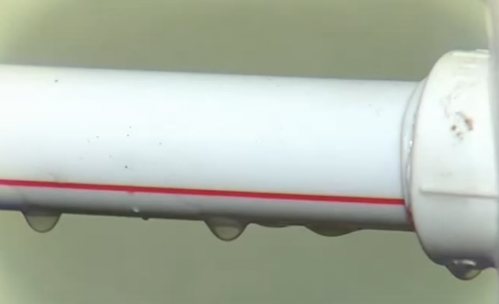

Everyone will agree that generating thermal energy is not a cheap “pleasure”. To exclude even the slightest heat loss, it is necessary to use high-quality thermal insulation materials. They make it possible to reliably protect communications: both from temperature extremes and from contacts with aggressive media.
High-quality thermal insulation is needed for polypropylene pipes to prevent the formation of condensation, this is already a problem for cold water supply systems. Due to the low thermal conductivity of the polymer material, such phenomena are rare, but they are quite possible. Especially in the summer (in basements), if the ventilation does not cope with its duties.
If the risk does exist, then it is recommended to protect polypropylene with insulation. However, in this case, you can get by with a rather thin layer of insulation.
Indoor insulation
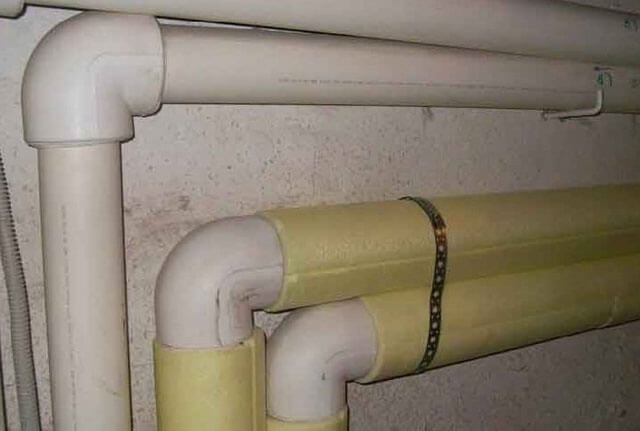

Insulation is not very often necessary for those sections of the polypropylene pipeline that are located in buildings. Condensation where ventilation does not work well is not the only problem. Insulation of pipes is necessary if they are in the house, but are located:
- above or below the ground, at a depth of up to 1 m;
- directly under the floor of the rooms on the first floor;
- in rooms (basements, attics) where there is no heating.
Polypropylene piping to unheated outbuildings (verandas, terraces) also needs to be insulated. Since in severe frosts there is always a risk of freezing of the coolant, when the circulation in the system stops, it is necessary to completely eliminate such emergencies.
In some cases, the risers of heating and hot water pipelines are also recommended to be insulated. In this case, the goal is exactly the opposite. This is a reduction in potential heat loss.
Protection against cold and potential accidents
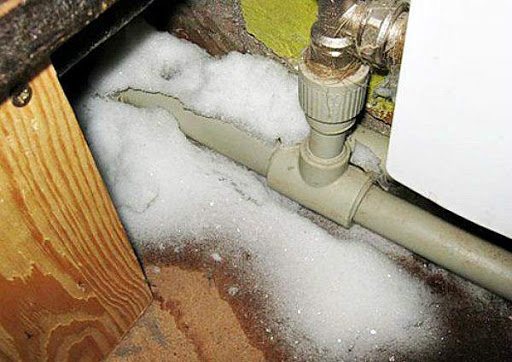

The likelihood of freezing the system also requires the organization of thermal insulation. She will warn:
- possible appearance of ice plugs;
- mechanical influences from the outside, they can lead to rapid wear of communications;
- regular freezing of the liquid, it will cause cracks due to the expansion of the coolant.
Thermal insulation materials help to avoid delamination of polypropylene products. The difference in temperatures outside and inside the pipeline leads to it: inside the liquid remains hot, and in cold areas the outer surface cools down strongly.
There is one more condition under which the answer to the question of whether it is necessary to insulate polypropylene pipes will be positive. This is the installation of the pipeline into the walls - in grooves, under the plaster. In this case, the owners must save the finishing materials, since the same thermal expansion of polypropylene can present an unpleasant surprise. Another undesirable consequence is the heating of the walls by the pipeline, which means the cooling of the coolant.
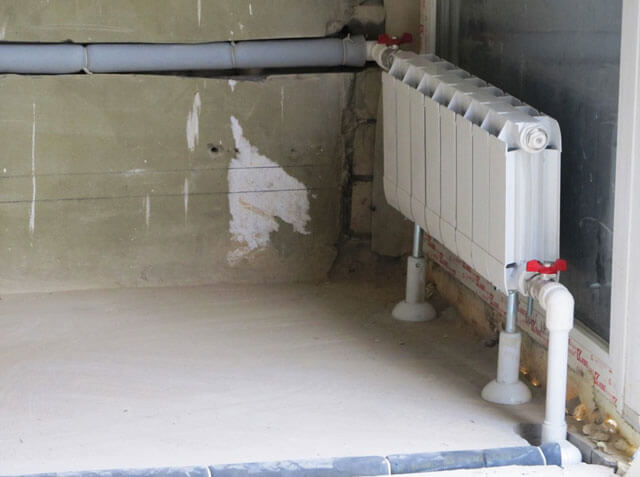

The arranged thermal insulation, in this case serving as a kind of shock absorber, will enable the pipes to "walk" (lose weight, get fat, grow) within their limits. Its layer will be enough so as not to be afraid for the safety of the topcoat. Deaf bricking into the walls with the help of plaster or cement will not give such a chance, which means that an accident, sooner or later, will surely happen. It should be noted that the dimensions of the strobes should be much larger.
Exactly the same consequences await unprotected polypropylene pipes, which will "take part" in the organization of the warm floor. This material is not very suitable for such systems. Its first drawback has already been indicated: it is too high a coefficient of linear expansion, so the pipes will press on the concrete. To avoid potential problems, the contour is laid on some kind of heat absorber, for example, on foam sheets.
The second reason for failure is low thermal conductivity. What is an advantage for other systems where minimal heat loss is important becomes a disadvantage in this case. The efficiency of underfloor heating with a polypropylene loop will leave a lot to be desired. On the other hand, no one demands a hot temperature from him.
Do polypropylene sewer pipes need to be insulated?
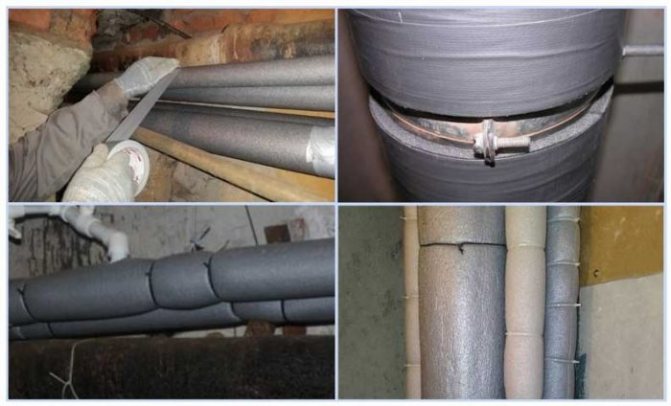

If we talk about the thermal insulation of the system inside the premises, then there is no need for it. In unheated rooms of the house, such an operation is mandatory, but only in those regions where winter still "pleases" with severe frosts. Since the temperature of the drains is high enough, where the climate is temperate or warm, such foresight will become unnecessary.
Sewer sections outside the building are recommended to be dug into the ground to a depth of 1500-2000 mm. This solution is practical and economical. The depth of pipe installation depends on the level of soil freezing: the pipeline should be located in the zone that does not threaten freezing.
Heating pipes in the floor under the cement screed: which ones to choose
Heating systems for apartments and private houses are constantly being improved, becoming more convenient and economical. The creation of a warm floor allows you to make the room much more comfortable. Heating pipes are laid in the screed, the heating of which occurs as a result of circulation through the hot water pipeline.The heat, rising upward, first heats up the floor covering and then the entire living space. This heating system is the most economical.
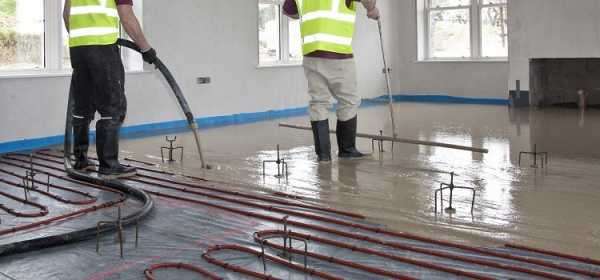

Laying heating pipes in the floor under the screed is a popular type of device for heating systems for housing.
- 1 Selection of pipes
- 2 Types of screed heating pipes
Choice of pipes
Water is most often used as a heat carrier, but a solution of ethylene glycol or antifreeze can also be used. The system itself has a number of indisputable advantages that allow uniform heating of the room with minimal energy consumption. The key to achieving optimal heating results is the correct selection of pipes and their layout.
It is necessary to select these elements taking into account the following requirements:
- durability. Since heating pipes are laid in the floor, their replacement or repair is not cheap;
- strength. This characteristic determines the level of performance indicators of pressure and temperature of the system;
- excellent heat dissipation. This is perhaps the most important requirement. The volume of heat entering the room depends on this property.
- minimum bending radius. This parameter imposes restrictions on the configuration of the underfloor heating system.
- low expansion ratio. Under the influence of pressure and high temperature, the diameter of the pipes increases slightly. This is not critical for open lines. However, if the heating pipes were laid in the floor under the screed, an increase in their size may violate the integrity of the floor covering;
- environmental friendliness. Everything is clear here: in the event of an accident, the pipeline should not harm the health of the inhabitants of the dwelling and the environment.
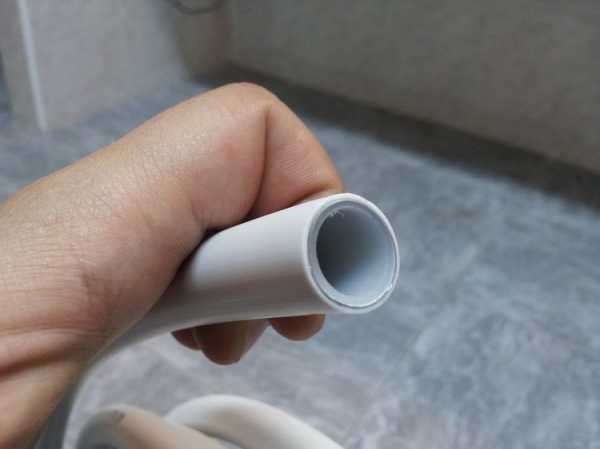

Pipes laid in the floor must have high strength, so it is better to choose reinforced products
Types of screed heating pipes
All these requirements are met by polypropylene, polyethylene and metal-plastic products. They all have their own advantages and disadvantages. Therefore, it will be useful to consider the pros and cons of heating pipes in the floor of each type in a little more detail.
Polypropylene pipes. Despite a significant plus - low cost - they are not widely used for creating warm floors. The reason lies in the presence of a number of significant shortcomings.
So, a polypropylene pipe has a considerable bending radius (8 diameters). This factor affects the distance between adjacent branches of the underfloor heating pipeline. With a diameter of 15 mm, those will be removed from each other by 1.2 meters, which will negatively affect the level of heating of the room.
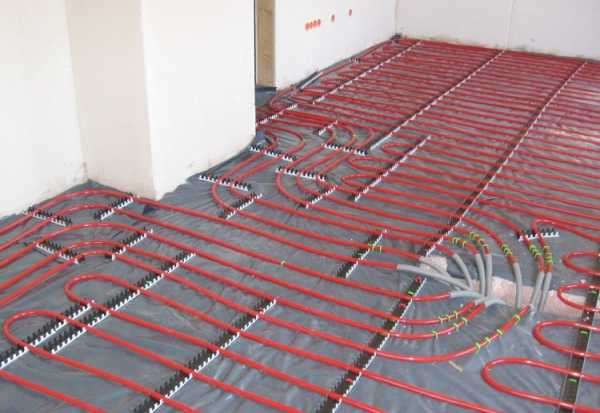

XLPE pipes are one of the best options for floor heating as they are strong, flexible and do not expand when heated.
Important! The temperature at which the polypropylene underfloor heating is installed is also critical. It should be at least +15 degrees.
Polyethylene pipes. There is one nuance here. It consists in the fact that the material for their manufacture is not ordinary, but cross-linked polyethylene. Of the advantages of heating pipes under this type of screed, strength, reliability and resistance to high temperatures should be highlighted. Existing technologies make it possible to obtain cross-linked polyethylene of various densities. So, there are pipes on the market with the markings:
- LDPE (Light Density - low density polyethylene);
- MDPE (Middle Density);
- HDPE (High Density).
The advantage of this type of product is the smaller bending radius (5 diameters). In addition, they can withstand temperatures of + 120˚С. But there were some drawbacks here. XLPE pipes do not hold their shape well. In view of this, their reliable fixation involves the use of a large number of fasteners. And the above characteristics of strength and reliability relate only to the transportation of the coolant. During the pouring of the screed or even during the laying, the polyethylene pipes can be easily damaged.
Reinforced-plastic pipes. These products have appeared on the market quite recently, but have already managed to gain leading positions.
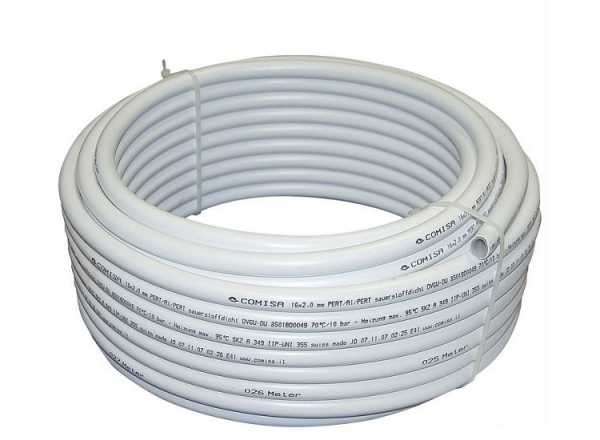

Pipes made of metal-plastic have high strength characteristics, do not corrode, scale does not deposit inside them
The metal-plastic pipe consists of three layers. The inner polymer ensures not only perfect transport of the coolant due to the smooth surface, but also protects the product itself from scale and corrosion. As a result, a long service life. The middle aluminum layer allows it to withstand high temperatures and keep the shape of the pipe. The upper polymer layer protects aluminum from external mechanical influences. All three layers are connected using a special adhesive.
How to pour sewer pipes into the floor


Lining up a sewer pipe is a way of rational use of the area, giving the interior of the room a finished aesthetic look. But during the installation process, the question arises: is it possible to hide the collector under a layer of concrete, there will be no further accidents in places with difficult accessibility.
Limitations
The wastewater drainage system is carried out in accordance with the requirements and norms of SNiP 2.04.01-85:
- Removal of liquid waste is carried out by gravity mains.
- Laying is allowed on technical floors, production and utility rooms, basements, specialized technological rooms intended for the arrangement of communications.
- A concealed device is permitted above a false ceiling, in technological shafts, bathrooms or showers, in structures with concealed under a layer of concrete.
- You can not stretch sewer pipes in dining areas, children's bedrooms of preschool and school institutions, wards and offices of hospitals, living rooms, rooms with electrical equipment (switchboard, transformer), halls for general civil purposes (reading rooms, libraries, classrooms, etc.).
READ ALSO: Cold welding for hot water pipes and radiators, plumbing
The reasons
The need to pour concrete into the collector passing through the room is caused by a number of factors:
- replacement of an outdated design with a new one;
- repair of a sewer pipe;
- current repair of sanitary facilities, kitchen;
- it is possible to raise the floor level without much loss of space;
- it is possible to hide sewer pipes in the floor, walls when erecting a new building or a private house.
By removing the sewer pipe into the concrete layer, a number of positive aspects arise:
- it becomes possible to rationally plan the interior space of the room;
- hidden pipes in the floor do not "call out" the eyes;
- the room is freed from the "protruding" elements of communications.
Installation nuances
Solving the problem: is it possible to brick the line under a brick or screed, it is necessary to take into account the technical properties of the collector material. Liquid waste can be at different temperatures, from 0 ° C to 90 ° C.
This factor causes stress caused by thermal expansion inside the sewer pipe.
Plastic construction, having less strength, can get mechanical damage and loss of tightness.
A simple action helps to eliminate harmful phenomena and reduce the load. Before installing the sewer pipe in the shelter, it is wrapped in several layers of plastic wrap.
This will create the freedom to expand in different planes.
An additional plus of getting rid of the pipe from thermal overloads is the reduction of the impact on the rubber ring seals at the junction of individual parts of the pipeline.
Another aspect, when answering the question: is it possible to hide a sewer pipe under a layer of concrete, is the mechanical strength of the collector.
Heavy viscous mortar, falling from a height, will cause shock and static loads inside the structure.
The pressure will be applied until the concrete sets and the internal load is redistributed from its own weight. The solution to the problem of how to pour a plastic pipe into the screed:
- provide a minimum distance from the source of concrete (shovel, mixer, concrete mixer) to the polymer product;
- the use of corrugated parts, which are distinguished by increased mechanical strength;
- the use of lightweight concrete mixtures (with the addition of slag, expanded clay, vermiculite, etc.)
Installation work
The installation of the highway into the shelter begins with preparatory operations:
- a draft design of the location of sewer pipes in a wall or other place is being carried out;
- measurements are taken of the distance from the floor, wall, ceiling;
- a plan of the room is being prepared, on which the location of the sewer pipe and plumbing fixtures are drawn;
- the places of future recesses or grooves necessary for the installation of a pipe into the wall are outlined; the distance from the floor, electrical wiring, pressure pipes of the water supply are taken into account.
The installation of sewer pipes in the wall or recess of the base begins with checking the integrity and tightness of the joints. The procedure is important - after pouring concrete into the pipe, it will become impossible.
Further, it is wrapped with a protective film and installed. If necessary, fastening to the wall or floor is carried out. Pouring with concrete mixture should be accurate, without throwing a large volume from a height. Further work with the line is allowed to be carried out after 2-3 days.
Given the information provided, it is not difficult to answer the question: is it possible to hide plastic products under a layer of concrete. The decision is positive.
polypropylene screed
Among other things, it is this material that determines the service life of the created structure. If the adhesive dries up, the pipe will simply flake off and no longer hold hot water.
Of the minuses, it is necessary to highlight the relative complexity of self-bonding of pipeline segments (at home, laser or ultrasonic welding, as a rule, is not used). If you "underpress" a little, leaks will appear. If on the contrary - "pinch" - then the deformed part will have to be cut off and a new fitting applied.
In conclusion, it should be noted that the ideal technical solution for arranging a warm floor is the use of copper pipes. Among their advantages, experts point out an impressive margin of safety and the same durability. And the heat transfer and the permissible bending radius of copper pipes elevate them to the rank of an absolute leader. However, due to the high cost, not every our compatriot can afford to mount a warm floor on their basis.
Selection of pipes Screed pipes Polypropylene pipes Polyethylene pipes Reinforced-plastic pipes
Progress does not stand still. This also applies to heating systems. The most convenient and economical methods of heating the home are being developed. The leader in this matter is the installation of underfloor heating, which helps to create the most comfortable conditions in the premises. The heating pipes in the floor first warm up the floor itself, and then the heat, rising, heats the entire room. This heating method is considered to be the most efficient.
Can polypropylene pipes be poured into a screed?
Heating systems installed in private houses and apartments are being improved every year, as a result of which modern products are not only convenient, but also economical. To make the room even more comfortable, the arrangement of the "warm floor" system is now popular.
The pipes are laid in a concrete screed that is heated by the circulating hot water. The heat gradually rises, which is why the floor first heats up, and then the whole room heats up.The described heating system is considered more economical. But the question remains whether it is possible to pour polypropylene pipes into the screed and how to do it correctly.
Choice of pipes
Most often, water is used as a heat carrier in heating systems. Antifreeze or ethylene glycol solution can act as an alternative. To ensure the minimum energy consumption for the efficient operation of the system, it is important to determine the installation scheme and select the appropriate pipes.
All elements of the underfloor heating system should be selected based on the following characteristics:
- Strength... It is taken into account depending on the conditions of the working pressure and the temperature of the coolant.
- Durability... The longer the service life of the pipes, the later it will be necessary to replace or overhaul the system.
- Heat dissipation... The most important criterion. The amount and intensity of heat for warming up the air space of the room depends on it.
- Minimum bending radius value... Affects the choice of the scheme and configuration of the underfloor heating system.
- Expansion ratio... This figure should be minimal. Under the influence of a heat carrier under high pressure, the outer diameter of the pipes increases. Unlike open heating systems, heating pipes in a floor screed can deform the screed itself and the floor covering due to expansion.
- Environmental friendliness... The heating system used should not harm the health of its users, that is, not release harmful substances into the surrounding space.
Polypropylene pipes in the underfloor heating system
Polypropylene pipes are known to many, in large part due to the fact that they are popular for organizing plumbing systems. However, if a "warm floor" system is planned in the dwelling, the use of these products still gives rise to controversy. The main advantage of the material is its affordable cost, the disadvantage is a low level of thermal conductivity when compared with metal-plastic products.
Important! Some craftsmen are worried that it is dangerous to fill polypropylene pipes with concrete, which damages both the screed and the products themselves. However, it should be remembered that the operating temperature of the warm floor is +45 degrees Celsius, so the probability is minimal.
Some enthusiasts have tried to combine underfloor heating with central water supply. However, current laws prohibit this. In addition, there will be no way to regulate the temperature of the coolant - this is where the main difficulties lie. The project, as a rule, is implemented on the basis of an autonomous boiler.
When installing the system, it is important to take into account that polypropylene heating pipes have a low thermal conductivity, so you will have to increase the frequency of turns - laying should be at least 10 cm apart. It is allowed to fill the pipes with a tie, but it is important that the latter is not too large a layer. If possible, the flooring used should have a high thermal conductivity. The best option is porcelain stoneware.
Screed pipes
All of these characteristics are possessed by plastic pipes. When making a choice in favor of these pipes when laying heating pipes in the floor screed, it is necessary to choose reinforced products.
Each type of underfloor heating pipe has pros and cons. Let's consider their differences from each other.
Polypropylene pipes
The undoubted advantage of these pipes is their low price. But for the device of warm floors, polypropylene pipes are used very rarely. This is due to a number of disadvantages.
The bending radius of polypropylene pipes is up to 8 diameters. Adjacent turns of the pipeline with a diameter of 15 mm will need to be located at a distance of 1.2 meters from each other. In this case, there is no need to talk about any efficiency of the heating system. And the use of additional fittings will lead to an increase in the cost of the entire system and an increase in the chances of pipe leakage at the joints.
Large linear expansion
If you are going to make heating with polypropylene pipes, then immediately lay down their use only in hidden installation. All pipes you will need to hide in the walls and screed, and preferably in insulation.
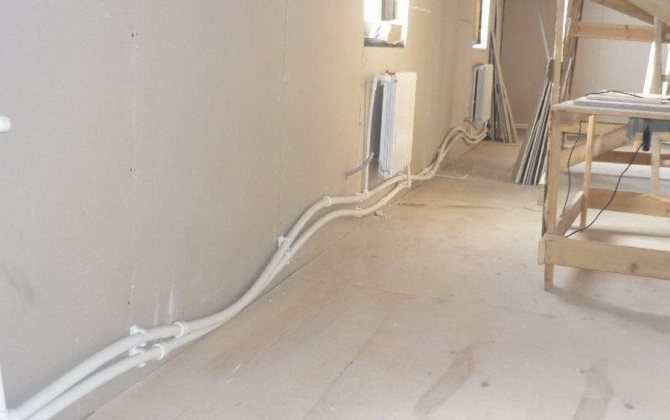

The main problem with polypropylene is its linear expansion. It is approximately 2.5 mm per one running meter. If you have installed straight pipes, then during operation they will surely "float" somewhere. Even if they are often fastened. If these pipes are located outside, then you are unlikely to appreciate such a picture.
It will be useful: Diagrams of piping and options for installing a heating system in a private house with your own hands
Polyethylene pipes
For the installation of underfloor heating, it is worth choosing pipes made of cross-linked polyethylene. The advantages of this type of pipe when laying in a screed are reliability, strength and resistance to high temperatures.
Cross-linked polyethylene is obtained in the process of polymerization, as a result of which the ethylene molecules seem to be cross-linked together, providing the material with maximum density (for more details: "Advantages of cross-linked polyethylene pipes for underfloor heating, installation rules"). 4 methods of polyethylene crosslinking have been developed, differing from each other in the percentage of crosslinking. The higher the percentage, the higher the density of the polyethylene, and hence the mechanical strength.
Advantages of XLPE pipes:
- Corrosion resistance. Resistant to acids, alkalis, organic solvents;
- Elasticity.
Pipes do not lose strength when the temperature drops to -50⁰С, as well as in cases of water freezing in them; - Resistant to high temperatures. They can be operated in systems with a constant coolant temperature up to 90⁰С. Withstand temperature surges up to 120⁰С.
The disadvantage of using these pipes in the underfloor heating system is the need to use a large amount of fasteners, since they poorly hold the given configuration of the circuit. When installing XLPE pipes in a screed, you need to be careful, as they are easily damaged.
Reinforced-plastic pipes
They are leaders in the construction market.
Reinforced-plastic pipes do not corrode, have high strength characteristics, and are protected from scale deposits inside the pipes.
Reinforced-plastic pipes are manufactured in multi-layer. The outer polymer layer of this pipe protects the middle layer from mechanical stress. The middle layer is made of aluminum, which helps to maintain the shape of the pipe and withstand the high temperature of the coolant. The inner layer is made of polymer material to protect the pipe from corrosion and scale deposits. The ideally smooth inner surface of the pipe does not impede the transportation of the coolant. All three layers are held together with a special adhesive. The quality of the adhesive has an impact on the service life of the entire pipeline. When this composition dries out, the pipe delaminates and ceases to hold the coolant.
The disadvantages of using metal-plastic pipes when installing a warm floor with your own hands is the difficulty of fastening the pipeline sections together. When installing fittings, it is important to correctly calculate the force. If the force is insufficient, a leak may appear in the assembly. And excessive force during assembly can damage the pipe, then it will need to be cut off and a new fitting applied. Ultrasonic welding is an alternative to fitting connections.
The ideal solution for the installation of underfloor heating pipes is the use of copper pipes.
QUESTION No. 11. What types of fittings for reinforced plastic pipes are there?
ANSWER. Fittings are designed for connecting several pipes and connecting to various devices, for example, to water meters, heating radiators, filtering devices, water heater pipes, etc.For metal-plastic pipes, collet (compression) options and press fittings are used. The former are the easiest to install. Wrenches are used to secure them. After dismantling the pipeline, these fittings can be reinstalled. Press fittings are used for any kind of connection, but are only suitable for single use. To fix such elements, special hydraulic or manual press machines are used.
What are the rules for installing polypropylene heating pipes?
They are absolute leaders in their characteristics. They have good heat dissipation. The service life of copper pipes is up to 100 years. Copper is ductile and strong, therefore, tubes made of it are light and have a small wall thickness. They are not afraid of freezing, after thawing they continue to work.
The disadvantage of these pipes is their incompatibility with other metals. When laying these pipes in the underfloor heating system, it is necessary to perform a ground loop. The very high cost of pipes and solder to them does not allow them to be used widely enough.

